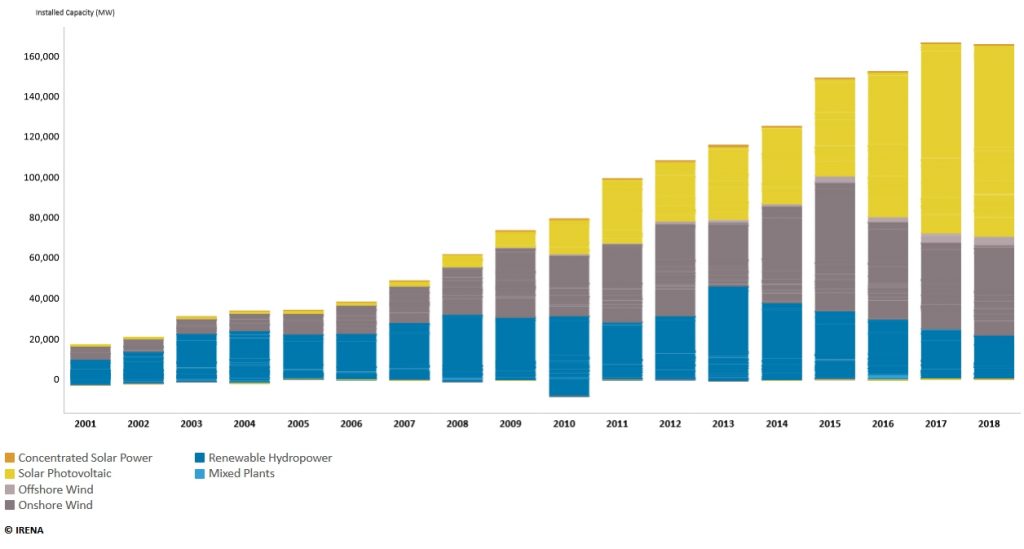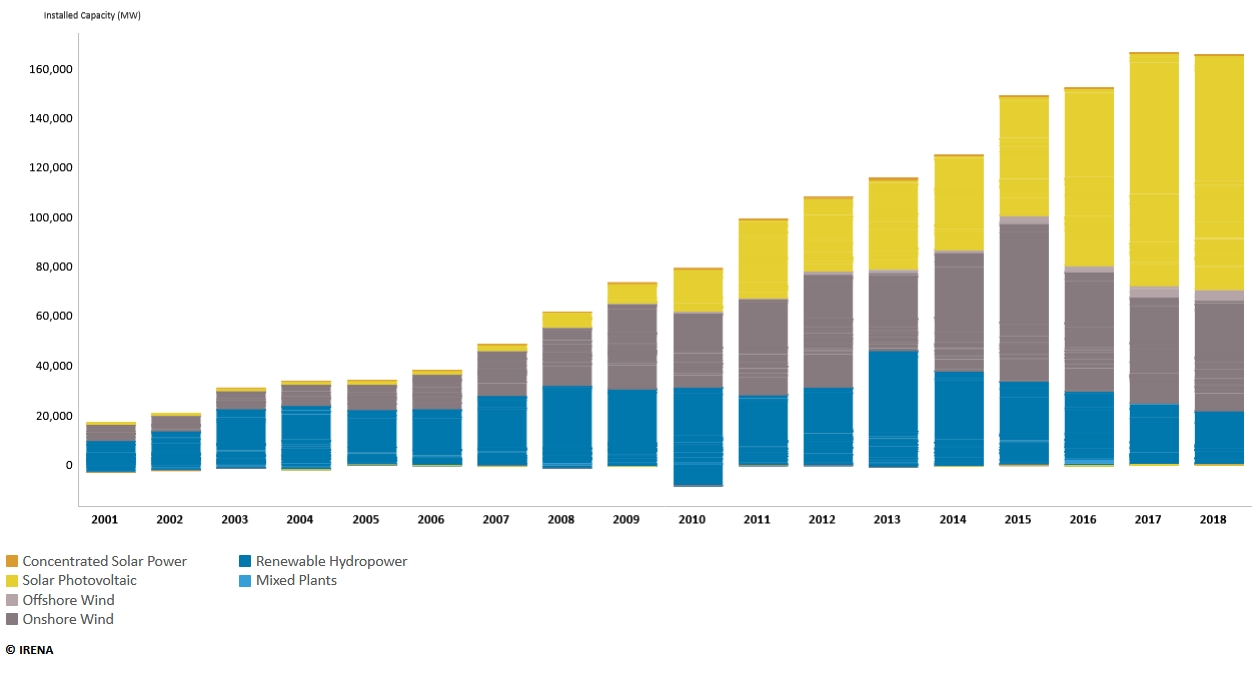
As economic attractiveness of hydropower goes down world-wide, the sector seeks to find new sources of support. Climate funding is the single most promising opportunity for hydropower to continue ruining rivers and forests of the planet. Therefore, we at the RwB pay close attention to these developments and want to share with You our recent comments on the “Draft Hydropower Standard for Climate Bonds” issued by the Climate Bond Initiative” – the first consistent attempt to “Climatewash” hydro in bond market.
LIMITED FUNDING FOR GREEN HYDRO (or limited “green hydro” ready for funding?)
It is worth a good discussion –where is the fine line after which we say NO to climate funding for hydropower? For example most of us agree we are against climate finance for greenfield dam-based hydropower project. It is less certain with pumped storage hydro (especially closed-loop pumped storage), while finance for climate adaptation of existing dams and decommissioning of redundant dams is likely welcome, if done in nature-friendly way.
So we urgently need policies and resources for dealing with existing and planned hydropower as a part of future “green finance”. And many are already in the making, some have been already issued.
Real challenge already soaring high is a virtually uncontested “Catalogue for Green Industries” issued by China in spring 2019. It is very comprehensive guide to modern economy types but includes large hydro, nukes, clean coal and other equally “green” projects. Now as the Peoples Bank of China is expected to allow issuing green bonds for “clean coal”, legitimacy of such funding for hydro is not even discussed in major dam-building nation.
European agencies are now talking about “harmonizing with Chinese Catalogue” and it their turn recently closed consultations for the “EU Taxonomy for Sustainable Finance”, which among 67 “climate friendly” industries presented very weak draft criteria for hydropower projects. Clear uniform message on unacceptability those project types in any European “green catalogue” was issued by many civil society groups.
Other countries also a trying to encourage “climate friendly” large hydro on par with solar and wind by various economic incentives and loosening permit procedures, with India leading the way, albeit without much results on the ground. In general, this effort to boost the “leading generation type among renewables” has limited success so far even in countries traditionally strong in hydropower construction. Thus, in a new Russian RE subsidies program approved this month for plants to go online in 2024-2035, small hydro got only USD 500 million or 7% out of overall quite modest funds, while the rest was divided by solar and wind. This happened despite unprecedented joint lobbying effort of all hydropower companies, rallying to attract 20-times greater subsidies and to end discrimination of “large hydro”.
GREEN STANDARD PROMOTED AT INDUSTRY GATHERING
As states’ efforts to boost hydro largely fail, the more important it becomes to create incentives working directly in the market, helping responsible investors to support “green projects” and that is where the Climate Bond Initiative (CBI) comes into play. The CBI has been at the forefront of the global effort on developing “hydropower standard” since 2016 and finally subjected it to very quiet public consultations in summer 2019.
The RwB learned about the upcoming consultation at the Climate Bonds Session of the World Hydropower Congress organized this May in Paris by International Hydropower Association (IHA). In the session the RwB Coordinator Eugene Simonov asked whether the CBI standards will have clear threshold discerning between more desirable retrofitting of old dam projects (as well as construction of off-river closed loop pumped storage plants) and much less desirable river-based greenfield hydrodam development. He noted that EKOenergy green power certification scheme designed in Europe set a compelling example: as a rule they do not certify greenfield hydropower dams built after 2013.
The answer to the RwB (given not by CBI but by a long-term “Assessor of sustainable hydropower” Joerg Hartmann) was that no such distinction is envisioned and they will use the “IHA ESG Tool” designed for a different type of multi-criteria assessment. In general CBI official could not answer questions and redirected them to IHA experts. The RwB representative approached the Head of Standards from the Climate Bonds Initiative after the session raising concerns about the standard-making process fully controlled by industry interests: the team they employed as developers of these standards is basically a core team of the IHA experts and “assessors” who have vested interest in perpetuating what they already developed for completely different purposes and so far failed to put to a good use.
The CBI representative said they understand concerns, but “could you offer an alternative standard?”…exhibiting usual attempt to relegate responsibility for proof from proponent to opponents.
MAIN CONCERNS RELATED TO THE DRAFT CBI STANDARD
As was promised to industry gathering, the CBI Consultation on Hydropower Standard was announced for short 45-day period in the middle of the summer, likely, to avoid civil society involvement. The “Draft Standard” consists of at least 4 different interrelated assessment guidelines, which makes is cumbersome and difficult to comment on within prescribed limit of 45 days (see Criteria Document for Public Consultation). But many of the RwB members and allies still submitted their opinions before the August 2.
In a nutshell, the RwB has the following main comments on the draft “Hydropower Standard for Climate Bonds”.
1. Our main idea is extremely simple: no new hydropower affecting natural freshwater habitats and undammed river stretches is eligible to be funded or refinanced by climate bonds. As a rule, only rehabilitation\retrofitting of existing dams may be allowed as subject to any “climate bonds”. Approach could be more nuanced when it comes to pumped storage, but “no new rivers” principle holds.
2.FPIC (Free prior and informed consent given by indigenous communities for the project) is a necessary step in any large development project, but its standards and procedures should be designed and administered by indigenous people’s organizations and competent UN agencies, not by the IHA. The best option is not to place any hydropower into areas traditionally used by indigenous peoples, and definitely not to make hydro at such places eligible for “green funding”.
3. The CBI methodology is wrong at its very origin. Draft standard largely relies on untested or already compromised GHG-measuring and ESG tools designed by hydropower industry association for its internal needs different from the CBI’s. Even industry shuns the IHA “sustainability tools”: in 10 years only 30 hydropower projects got through such assessments. The proposed ESG Tool is not transparent, subjective, hardly understandable to outsiders and is vastly inferior to other much more straightforward and objective standards which the CBI already has issued for solar, wind, water infrastructure. So the draft standard is 100% not credible.
4. Most current technological guidelines encourage use of “best available practices and technologies” while IHA ESG tools are satisfied with “good practices” reflecting business as usual (BAU). So the CBI standard will not encourage use of best available practices. More than that –the Standard practically encourages cheating. It suggests that the project may pass even when it falls “10-gaps” short of “good practice”. This greatly complicates verification. Out of 12 assessment “topics” project may have some “gaps” (failures) in 10 and still be certified just at a cost of promising “to fix it in 12-24 months”! The problem is that majority of ESIAs done for modern hydropower dams promise to fix multiple gaps\problems, but project owners do not fix many of them either out of negligence and lack of control or often due to inherent flaws in proposed solutions (such as underperforming “fish passes” and “environmental flow schemes”). Therefore “standard” legitimizes empty promises which make the project perform even worse than “business as usual” in hydropower -one of most destructive and difficult to mitigate sectors of energy industry.
5) The CBI already has developed robust but straightforward “Water Infrastructure” standards. Those do not readily correspond well with murky draft hydropower standards. If not fixed, the CBI will have double standards for “water infrastructure” (hydro by definition is a type of Water Infra) which will confuse stakeholders, especially in case of certification of multi-purpose reservoirs or various water infrastructure projects in the same basin. Applying already existing “Water Infrastructure” standards should be mandatory for hydropower or any other water infrastructure certified by the CBI.
6. 250+ non-governmental groups signed “The False Promises of Hydropower“ Statement in May with a clear message to devote climate funding to environmentally friendly, time-bound, socially acceptable mitigation and adaptation measures. They called not to devote such funding to new hydropower projects.
CLIMATE ALIGNED HYDROPOWER DEVELOPMENT?
The CBI asked in consultations form whether the standard can achieve “climate-aligned hydropower development”. We doubt this is possible in principle, because of variety of factors:
A) Time-bound nature (urgency) of climate mitigation measures is neglected when choosing hydro. Greenfield hydropower projects have 5-10 times longer implementation cycle than solar or wind projects, thus do not correspond well with the objective of keeping check on global warming in near future.
B) GHG emissions from reservoirs should be calculated for first 10-25 years, not as average for 100 year timeframe as suggested by the IHA. Most intensive emissions from reservoirs are observed in first decades after construction (and from construction itself); exactly during the period when quick reduction of emissions is an imperative of Paris Agreement. Whatever GHG emission reductions could be delivered in 50-80 years from now – this largely misses the current target.
C) Hydropower plays the major role in transforming and degrading the most fragile part of global climate system -the Hydrosphere. Disruptions dams bring to inland water systems right now are similar or more disastrous than those anticipated to hit hydrosphere as a result of climate change (to prevent which hydro is allegedly built). Therefore “climate-aligned hydropower” is an oxymoron in principle.
D) To be credible any energy project should be assessed as part of energy system (as requested in this draft only for pumped storage) against other options to mitigate and adapt to climate change. Despite its ability to stabilize the system, in most such assessments new hydro loses to other solutions as a viable option .
Certification decisions under the Climate Bonds Standard are binary – bonds are either certified or not. Therefore, the Standard needs to be framed in terms of pass/fail thresholds. Given the sum of knowledge we have on hydropower impacts, limited number of natural freshwater ecosystems left on earth and rapid pace with which freshwater biodiversity disappears, timing and costs of construction, vulnerability to climate change the vast majority of proposed greenfield hydropower projects always could be substituted by better development alternatives and climate mitigation solutions. Therefore climate funding for greenfield hydropower in 21 century cannot be justified.
RwB


